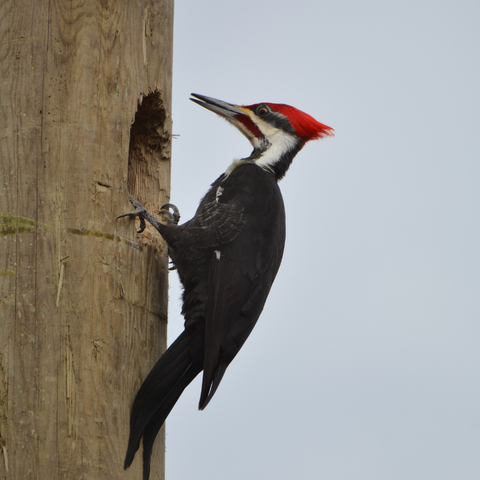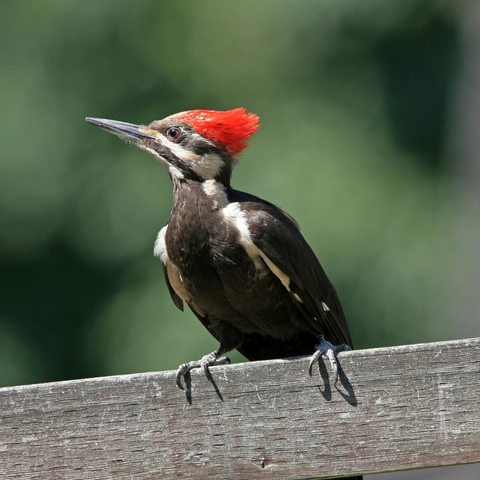The Pileated Woodpecker is the largest living woodpecker in North America; the Ivory Billed Woodpecker was larger but is assumed to be extinct. The Pileated Woodpecker is about the size of a crow, with a mostly black body, a black and white striped face and neck, and a bright red tuft or crest on its head. They also have white barring on their wings that can be seen during flight.

This woodpecker is found year-round on the east coast and in the eastern Midwest, as well as some parts of Canada and parts of the Pacific Northwest. Their diet mainly consists of insects, with carpenter ants being a special favorite, so they can be often seen and heard hammering away at trees. They will often hammer away at bark in a rectangular pattern and use their beaks to peel the loosened bark off trees.

Pileated Woodpeckers are cavity nesters, and outside of nest season their nest cavities are often used by other species for shelter, including owls, pine martens, and bats. Given their diet and nesting habits, Pileated Woodpeckers need access to all types of trees, including dead ones! If you have a dead tree in your yard or woods that is not a threat to any structures, consider leaving it standing to help attract these and other woodpeckers to your area.











